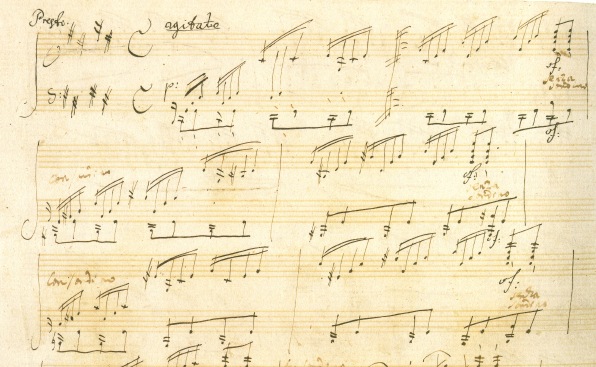
Yes, the internet can technically tell us what time signature a song is in. But isn’t it much more satisfying to be able to figure it out on your own? Here’s our guide to identifying time signatures. (Then, you can graduate from Googling for the answer to debating on Reddit.)
Time signatures don’t just tell us how many beats fit into a measure – more importantly, they serve as an indicator of how the music should feel. With that same logic, we can rely on our ears and the feel of the music to identify the time signature of a piece.
Here’s a step-by-step guide to recognizing time signatures, with examples:
Let’s listen to “We Are The Champions”.
Where are the strong beats? No need to think about numbers or start counting yet. Just move your body to the music.
In general, listen for the bass or the kick and snare. Your clues might be in the melody (or words, with strong and weak syllables), though sometimes you might feel the beat in the middle of the note – which indicates syncopation.
“No time for lo-sers, cuz
We are the Cham-pions”
Now you’ve felt the strong beats, it’s time to listen to what happens between them. The most common subdivisions are 2 and 3. Remember, swung rhythms are subdivided in three, but the second subdivision is often silent.
In the chorus of “We Are The Champions”, if you listen to the piano and the hi-hat, you can hear the 3 notes between each pulse.
Or in the lyrics, you can also hear 3 syllables per pulse in the verse:
“I’ve paid my dues,
Time af-ter time…”
(Freddie Mercury plays with the timing a bit, but if he were to sing it straight, this is where the beat would fall.)
Again, you can always check in with your body – are you bobbing your head up and down evenly – in two? Or are you moving side to side, swinging and lilting – in three?
For more clues, listen to the melody, the hi-hat, or other instrumentals.
Good news! By knowing how the beat is subdivided, you’re already halfway to identifying the time signature:
Now it’s time to really zoom in on the strong beats, or the pulse, and listen to which ones are stronger. The hierarchy of beats is as follows:
Duple time (two strong beats): STRONG – weak*
Triple time (three strong beats): STRONG – weak – weak
Quadruple time (four strong beats): STRONG – weak – (less) STRONG – weak
*This hierarchy of beats is also what separates 6/8 (duple time) from a fast 3/4 (triple time). As we mention in this article, the difference between the two can get tricky when a compound meter subdivision “ONE-and-a” feels like triple time, “STRONG-weak-weak”, or vice versa. The key is to determine if the pulse “ONE-and-a TWO-and a” fits into the duple time hierarchy of “STRONG-and-a Weak-and a”; or whether there isn’t such a differentiation: “STRONG-weak-weak STRONG-weak-weak” or “ONE-two-three ONE-two-three”.
If the stronger beats don’t immediately jump out at you, especially if you’re trying to differentiate between duple time (2/4) and quadruple time (4/4), you can always look out for additional clues.

As the barlines show, this piece is in 12/8. However, even if we ignore the barlines, there are several indicators that tell us this piece is in 12/8.
Let’s go back to “We Are The Champions”, where the stronger pulses are now in bold:
No time for lo–sers, cuz
We are the Cham-pions
What makes these beats stronger than the rest, to list a few, are the guitar strums, crash cymbals, and the harmonic changes at each of these points.
We can rule out triple time for this since these pulses have a STRONG-weak-STRONG-weak pattern. Now we just have to determine whether the third beat is less strong than the first.
Let’s try singing this with less emphasis on the third beat. It feels strange, doesn’t it? Especially when we sing “We are the Champions” – the song doesn’t really make sense if we don’t emphasize “Champ” in “Champions”. Instead, feeling this song in two, with a pendulum swing feel, we can really get into the flow of the song.
So, with your ears, you’ve discovered that this song is in compound meter and in duple time – which makes its time signature 6/8!
Just remember, ultimately, the time signature is connected to how the music feels, in its rhythm and its phrasing. Of course, as you play and interpret music, you’ll use your own judgment as to how you want the music to feel – but it never hurts to be informed by the time signature!
Soundbrenner is a company dedicated to helping musicians stay focused on what truly matters: their music. By creating innovative devices, such as Soundbrenner Pulse and Core, our goal is to deliver the best possible practice experience for musicians. Click here to find out more.
Got a question about Soundbrenner wearables? Reach out to us at [email protected], we’re happy to help!